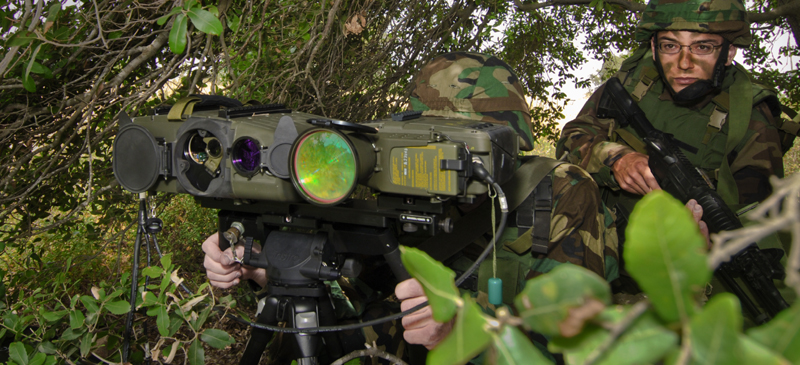On June 23, South Korea awarded a contract to a local company to acquire laser designators specifically developed to amplify the precision strike capabilities of its fighter aircraft.
The contract, valued at 86.7 billion won (US$66.52 million), was officially granted to Hancom Lifecare Inc. by South Korea’s Defense Acquisition Program Administration (DAPA).
The awarded contract is meant for the production of ground-based equipment through technological collaboration with two prominent defense companies, namely L3Harris and Leonardo DRS.
This strategic cooperation aims to leverage the advanced capabilities and expertise of these firms to improve South Korea’s domestic manufacturing capabilities in the defense sector.
South Korea’s arms acquisition agency, DAPA, did not provide specific details regarding the target year for deployment and other particulars. But, the agency said the South Korean military has relied on imported laser designators.

Meanwhile, the newly awarded procurement project signifies a focus on domestic production, enabling the country to establish a local supply chain for the equipment.
The project also involves the active participation of 16 local subcontractors, highlighting the importance of collaboration within the domestic defense industry.
A DAPA official highlighted the project’s significance, stating that it would enable the military to secure a crucial asset for South Korea’s three-axis system. The three-axis system refers to the nation’s vital deterrence strategy, which includes the Kill Chain preemptive strike platform.
The successful implementation of this procurement project will contribute to the overall effectiveness and strength of the country’s defense capabilities. It will enhance its ability to deter potential threats originating from North Korea.
Ground Laser Target Designators
As the Defense Acquisition Program Administration (DAPA) states, Ground Laser Target Designators (GLTDs) are portable devices ground forces use to designate and illuminate targets with a laser beam.
GLTDs are typically handheld or mounted on tripods and provide precise targeting information to guide munitions, such as laser-guided bombs or missiles, toward the designated targets.
These devices emit a laser beam that is detectable by sensors on aircraft or other weapon systems, allowing for accurate and effective engagement of the designated targets.
GLTDs are critical in modern warfare, facilitating precise and coordinated strikes by enabling ground forces to mark targets for airborne platforms or other weapon systems.
In collaboration with Hancom Lifecare, the Defense Acquisition Program Administration aims to localize Ground Laser Target Designators (GLTDs) by augmenting their performance and reducing weight.
The objective is to develop a domestic GLTD that matches or surpasses the capabilities of the devices obtained through South Korea’s initial GLTD deployment program, which involves adopting American-made equipment.
Major Lee Yung-un from DAPA’s naval aerial command system division earlier told the Aju Business Daily that the localized GLTD would play a crucial role in bolstering the attack capabilities of the South Korean military.
This development signifies the nation’s commitment to strengthening its military capabilities and achieving self-reliance in defense technology.
In 2013, South Korea signed a contract to procure the Scarab Ground Laser Target Designator (GLTD) from L3 Technologies, a US-based company. The delivery of the Scarab Ground Laser Target Designator (GLTD) system, with an initial value of around $30 million, commenced in 2015.

L-3’s Scarab system is a competent and efficient precision targeting solution. Designed to be compact, lightweight, and easily portable, it can be rapidly deployed in just a few minutes.
This system offers advanced targeting capabilities for military personnel, enabling them to accurately identify and designate targets for precise ordnance delivery, regardless of the time of day or prevailing battlefield conditions.
Equipped with state-of-the-art diode-pumped laser technology, the Scarab system incorporates the latest advancements in laser designators.
Its battery-powered operation ensures extended usage, providing over 60 minutes of total designation time, equivalent to more than 100 missions, all powered by a single battery charge. This feature elevates its operational efficiency and reduces the need for frequent battery replacements.
Nonetheless, developing a domestically produced GLTD will reduce dependence on foreign suppliers and simultaneously increase South Korea’s self-sufficiency in defense technology.
It will give the government greater authority over the production, upkeep, and distribution of critical military equipment.
- Contact the author at ashishmichel(at)gmail.com
- Follow EurAsian Times on Google News




